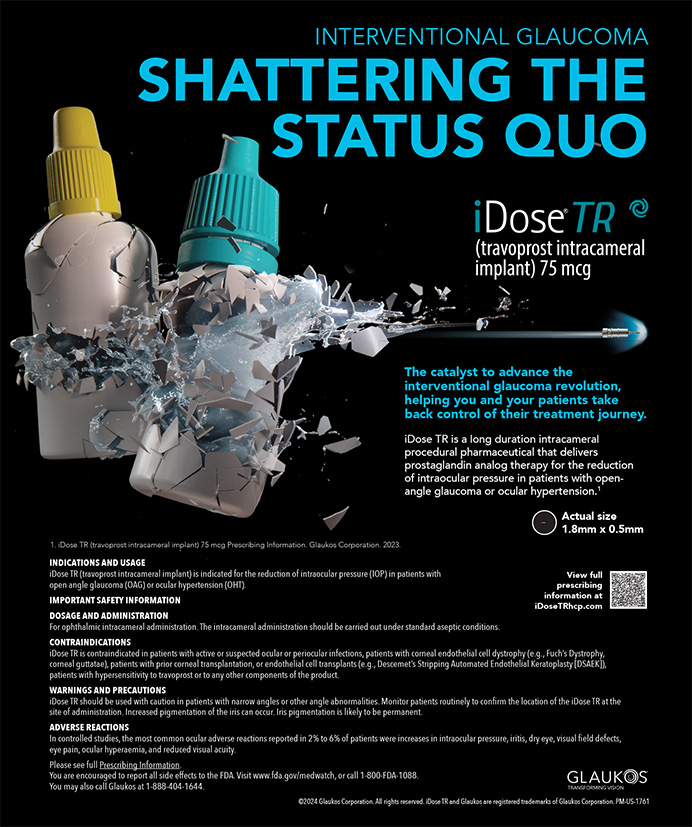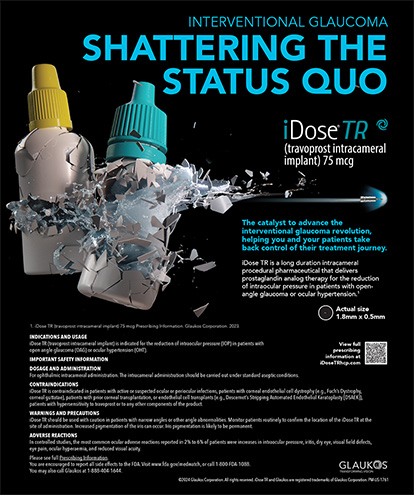
Technological advances in diagnostic devices and tools for patient education have transformed preoperative discussions with patients regarding IOLs. Their understanding of cataract surgery varies, but most patients recognize the procedure’s positive impact. Their awareness of the more costly advanced technology options—which offer considerable benefits—is less common. These choices are crucial because they affect lifelong vision and financial planning. Research indicates that up to 80% of patients would consider these advanced options if they were aware of them, thus making the dissemination of this information not just beneficial but necessary (data on file with MDbackline).
Early Patient Education Initiatives
To communicate the potential of advanced technology IOLs effectively and build trust and rapport early in the patient journey, it is essential to start the educational process before formal patient-doctor interactions begin. Utilizing resources such as Alcon’s digital patient engagement tool (formerly MDbackline), Ocular (Engage Technologies Group), and Rendia (PatientPoint) enables practices to begin educating patients from the moment an appointment is scheduled. (Editor’s note: For more on Ocular and Rendia, see the sidebar.)
Examples of Software Solutions for Simplifying Patient Education and Engagement
Ocular (Engage Technologies Group)
This platform uses text messaging, video, and mobile devices to deliver targeted and timely knowledge to patients. It helps optimize patient engagement at crucial points in their care journey. The approach simplifies the transmission of complex information through easy-to-understand videos and interactive content:
- Text. The process begins when a patient scans a QR code or sends a text message.
- Watch and learn. Patients receive daily, high-value video content that improves their understanding of their health conditions and available treatments.
- Take action. Better informed patients are more likely to pursue recommended treatments and procedures.
This platform not only facilitates continued communication from the initial consultation to postoperative care, but it also enhances patient compliance and understanding. Additionally, the system reduces the staff workload by automating responses to frequently asked questions and allowing employees to focus on higher-quality tasks.
Ocular also offers comprehensive analytics to track the success of patient engagement efforts, providing practices with valuable insights into patient behavior and the effectiveness of communication strategies.1
Rendia (PatientPoint)
Founded in 2000 by Steven Sopher, OD, this platform is designed to simplify complex medical information. The goal was to enhance how health care providers communicate intricate details to their patients.
Key features of Rendia include the following:
- Video education. The platform offers a variety of educational videos, such as an overview of trifocal IOLs, which helps manage patient expectations. Another video targets younger patients considering online eyewear purchases and emphasizes what they might miss in terms of comfort and clarity compared to in-store options.
- Interactive anatomy tools. The platform’s exam mode uses a digital eye model to describe various eye conditions and procedures visually. This tool supports explanations of how diseases such as glaucoma affect vision and what happens during procedures such as an Nd:YAG capsulotomy.
- Outcome simulator. This feature allows patients to test-drive treatment options, which helps manage their expectations and enhance their understanding of potential outcomes. The feature can be particularly useful during consultations for cataract and refractive surgeries.2
1. Engage. Why the Engage difference? 2024. Accessed April 15, 2024. https://www.engagetg.com/how-it-works
2. Rendia. Optometry & ophthalmology. 2024. Accessed April 15, 2024. https://rendia.com/specialties/eye-care
Alcon’s digital patient engagement system identifies potential cataract surgery patients and provides them with preliminary information about the procedure and available technologies. The information is tailored to the specific offerings of their doctor, whether it be femtosecond laser–assisted cataract surgery or multifocal lenses. Not only does this preemptive approach prepare patients for the upcoming consultation, but it has also been shown to increase the adoption of advanced technology solutions significantly, as demonstrated in practices where the system’s implementation has led to adoption rates well above the national average (data on file with MDbackline).
Enhancing Internal Processes
The integration of advanced education tools into a practice can not only enhance patient understanding but also streamline internal processes significantly, thereby improving overall practice management. One pivotal component included with Alcon’s system is the visual profile report, a comprehensive visual display that helps prepare both the medical team and administrative staff before a patient enters the consultation room.
This report provides details on the patient’s visual symptoms, lifestyle, and visual history, including any previous procedures such as LASIK and experience with monovision and multifocal contact lenses. The report also gauges personality traits, such as whether a patient is a perfectionist or more easygoing, which can influence their expectations and decisions. This depth of preconsultation knowledge can help the clinical team tailor their recommendations effectively.
Additionally, the system assesses and indicates how likely a patient is to choose advanced technology solutions. This feature not only guides the staff but also ensures that discussions align with the patient’s expectations and willingness to invest in advanced visual technology. The report can be integrated seamlessly into electronic health records as a PDF, facilitating easy access during consultations and helping with the documentation required for surgical procedures. The technology reduces the time spent on administrative tasks, phone calls, and in-person consultations, thereby improving workflow and enhancing patient care delivery.
Setting Expectations and Transparency in Consultations
Navigating the delicate balance between informing and influencing patients is a key aspect of consultations, especially when discussing advanced technology IOLs with someone who is a perfectionist or particularly interested in these options. The first step is to set realistic expectations about the offerings, their costs, and their implications for the patient’s future vision.
I work to ensure transparency from the outset. I emphasize that, although advanced surgical options are available, they come with additional costs that are not covered by insurance. My primary goal is to ensure that patients are fully informed about their choices. I say, “What’s most important is that you understand your choices because they will affect your vision for the rest of your life. I’m happy to perform your surgery with whichever technology you choose, but it’s essential that you understand what each choice entails.”
I find that this approach fosters trust and respect. My patients appreciate upfront and honest discussion. The software used in my practice mirrors my efforts by providing patients with the information necessary to make decisions. The patient’s autonomy and intelligence are respected. The technology, when properly explained, speaks for itself.
Technological Advances in Surgical Planning and Lens Selection
Another technological advance that greatly influences surgical outcomes is the development of sophisticated systems for surgical planning and IOL selection such as SmartCataract (Alcon), Veracity (Carl Zeiss Meditec), and Eyetelligence (Bausch + Lomb).
These systems are engineered to refine the selection of lens power and model for each patient. The tools not only reduce the potential for errors but also enhance the precision and efficiency of surgical outcomes.
Conclusion
Advanced patient education technologies can improve both the patient experience and clinical results. As these technologies evolve, they pave the way to more effective and patient-centered care.




